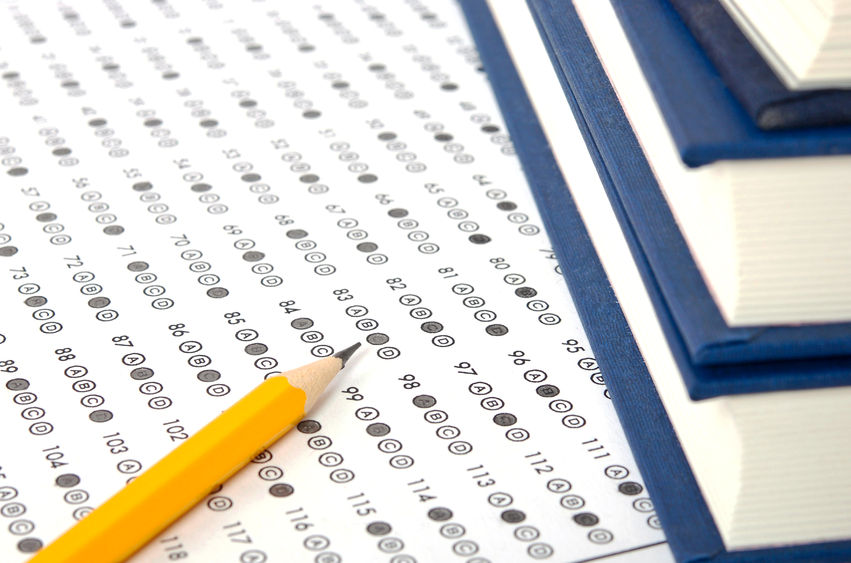Police Testing
An overview of police testing information.
Police
Testing
Written Police Tests, Physical Abilities Test and Police Test Preparation Materials

If you are looking for a career as a police officer, you are probably curious about police testing. Passing a police test is generally a requirement to secure a position in law enforcement. The exams are not uniform across the country, although many have similarities. If you know what department you are looking to secure a job with, find out what test they administer so you can obtain the appropriate prep materials. It is best to ask the HR or recruiting department. If you are still looking at police department job availability, subscribe to the IOS job board where we have multiple job listings. Below you will find brief descriptions of various entry-level law enforcement tests, a basic overview of the Physical Abilities test, and links to IOS police test prep materials.
Common Entry-Level Police Exams
NCJOSI²
Several departments in the Unites States test potential police officers with this exam created by Industrial/Organizational Solutions. This exam tests both cognitive ability and behavior. The NCJOSI² is a timed test that lasts 2 ½ hours, plus 15 minutes for instructions.
The cognitive portion of this police assessment consists of 80 multiple choice questions in the following areas:
- Verbal Comprehension – Show your ability to understand written language.
- Verbal Expression – Communicate using grammar, vocabulary, word order, and spelling.
- Problem Sensitivity – Identify problems in written form and possibly indicate how to solve them.
- Deductive Reasoning – Use logic to determine the best course of action to take for each situation, usually involving department policy.
- Inductive Reasoning – Find the common element, concept, or rule that connects a scenario, string of events or a set of objects.
- Information Gathering – Place procedure statements in the proper order.
- Spatial Orientation – Determine your location in an area or structure and find direct routes with maps and layouts.
- Visualization – Identify an original object after it has been changed.
- Selective Attention – Test concentration with combinations of letters, numbers and symbols.
- Flexibility of Closure – Use patterns to identify a face in a crowd.
The Behavioral and Attitudinal Attributes Section consists of 120 statements.
Each statement is followed by a five-point agreement scale: Strongly Agree (1); Agree (2); Not Sure (3); Disagree (4); Strongly Disagree (5). You will mark the number that best reflects your attitudes, actions, preferences, and opinions.
NCJOSI
The NCJOSI tests cognitive ability and behavior. This timed exam is 1 ½ hours, plus 15 minutes for instructions.
The first section of the exam tests cognitive ability and consists of 45 multiple-choice questions. Below are the three cognitive areas of focus:
- Mathematical Reasoning – This section assesses your accuracy in the use of basic arithmetic functions: addition, subtraction, multiplication, division, percentage, ratio, perimeter, area, and circumference.
- Reading Comprehension – Comprehend, analyze and interpret written information.
- Grammatical/Written Competency – You will need to summarize and relay information with proper grammar, spelling, punctuation, and vocabulary.
The Behavioral and Attitudinal Attributes Section consists of 42 statements.
Each statement is followed by a five-point agreement scale: Strongly Agree (1); Agree (2); Not Sure (3); Disagree (4); Strongly Disagree (5). You will mark the number that best reflects your attitudes, actions, preferences, and opinions.
NGLE
The Next Generation Entry-Level Law Enforcement Aptitude Test measures cognitive ability and situational judgement. This police testing tool lasts 3 ¼ hours, plus 15 minutes for instructions.
The first section of this exam tests cognitive ability and consists of 40 multiple-choice questions. The cognitive portion of this test focuses on the two areas below:
- Reading Comprehension – Tests your ability to comprehend text and analyze its meaning.
- Grammatical/Written Competency – You will need to communicate information using proper grammar, spelling, punctuation, and vocabulary.
The Non-Cognitive Section of this exam consists of 96 Situational Judgement questions.
This section of the exam will measure traits such as Interpersonal Skills, Emotional Outlook, Self-Awareness and the ability to understand complex situations.
LST
The state of the art Law Enforcement Officer Selection Tool exam tests cognitive ability and non-cognitive traits. The time for this exam is 2 ½ hours, with separately timed sections for cognitive (2 hours) and non-cognitive (30 minutes) plus 15 minutes for instructions.
The first section of this exam tests cognitive ability and consists of 70 multiple-choice questions. This portion will test the following:
- Reading Comprehension – Read text and correctly interpret its meaning.
- Written Expression – Communicate information and ideas using proper grammar, spelling, punctuation and vocabulary.
- Deductive Reasoning – Apply rules and procedures to specific situations.
- Inductive Reasoning – Arrive at a conclusion after combining pieces of information.
- Information Gathering – Correctly order a set of actions or steps.
- Spatial Orientation – Identify where you are in a space and identify the best way to get from A to B.
- Flexibility of Closure – Determine important material and patterns in groups of information.
The Non-Cognitive Section of this exam consists of 120 behavior statements and multiple choice questions.
Physical Test (PAT) Police Testing Tool
Here are some examples of job simulation tests that you might see on an IOS police Physical test:
- Exiting a vehicle with a weighted vest safely within a time limit.
- Weaving through traffic cones to simulate driving through obstacles while pursuing a suspect.
- Crawling and jumping under and over obstacles without knocking them over.
- Climbing multiple flights of stairs.
- Scaling a wooden fence and chain link fence.
- Dragging a 165-pound dummy a total of 50 feet.
- Firing a mock gun while keeping your arm steady.
Since the physical part of a police officers job is time-sensitive, your police physical test will also be timed.

Police Practice Tests and Police Testing Preparation Materials
Still Have Questions? Contact us

Telephone No.(888) 784-1290
